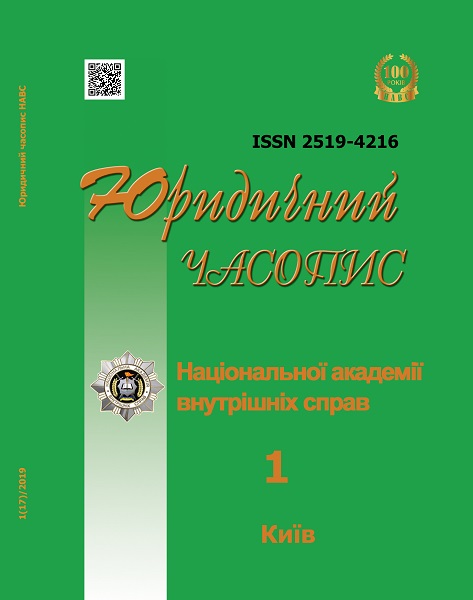The Offender is an Element of a Forensic Description of the Violation of the Requirements of the Radiation Safety Regime
Abstract
The purpose of the article is to determine the typical characteristics of a person who breaches the requirements of the radiation safety regime and justifies the feasibility of establishing specific characteristics of the offender in the investigation of these crimes. The research methodology consists of general scientific and special methods of scientific knowledge: dialectic – for the knowledge of social and legal phenomena in their connection, development and change; historical and legal – to clarify the genesis of scientific views on a number of concepts used in the investigation of the person of the offender as an element of forensic characteristics; logical and legal – in the development of special terminology and normative base in the field of radiation safety in order to deepen the conceptual apparatus of forensic techniques related to the relevant subject; sociological and statistical – during the questioning and interviewing of investigators, studying and synthesis of law enforcement practices. The scientific novelty of the work consists in the fact that for the first time the traits of the offender, as an element of forensic characterization of crimes stipulated in Article 2671 of the Criminal Code of Ukraine. Conclusions personality of the offender as an element of forensic characterization of crimes stipulated in Article 2671 of the Criminal Code of Ukraine has a specificity, it is connected with its other elements: the situation, the way of committing a crime, the subject of a criminal offense. The peculiarity is that a limited number of persons can commit a crime, given the difficulty of entering the territory of the exclusion zone. The forensic significance is the information on the reasons for the person’s stay in the exclusion zone, information about the place of work or other connection with the restricted zone, the potential access to the objects of the criminal offense and their movement outside the exclusion zone, the links of the offender with the persons who work (worked previously) in the area of exclusion and other persons who may be interested in committing criminal acts, the facts of committing similar offenses in the past, the motivation of criminal activity.
Keywords: criminal person; forensic characteristic; regime; radiation safety; investigation; exclusion zone.
Downloads
Abstract views: 127 PDF Downloads: 166
Copyright (c) 2019 Law Magazine of the National Academy of Internal Affairs

This work is licensed under a Creative Commons Attribution-NonCommercial-NoDerivatives 4.0 International License.
- Authors reserve the right to authorship of their own work and transfer to the magazine the right of the first publication of this work under the terms of the Creative Commons Attribution License, which allows other persons to freely distribute published work with mandatory reference to authors of the original work and the first publication of an article in this magazine.
- Authors have the right to enter into separate additional agreements on non-exclusive dissemination of the work in the form in which it was published in the journal (for example, to post an article in the institution's repository or to publish as part of a monograph), provided that the link to the first publication of the work in this journal is maintained.
- The journal's policy allows and encourages the posting of articles by authors on the Internet (for example, in electronic storehouses of institutions or on personal websites), both before the submission of this manuscript to the editorial office and during its editorial processing, as this contributes to the creation of a productive scientific discussion and positively affects the efficiency and dynamics of citing the published work.




